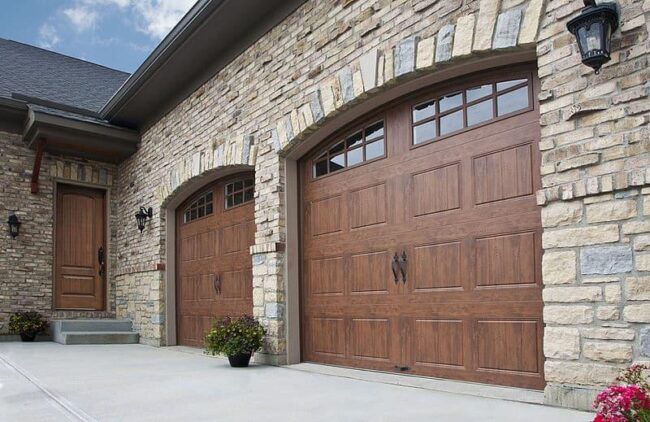
Commercial doors are designed to provide security, accessibility, and convenience in business settings. Whether in office buildings, retail stores, warehouses, or healthcare facilities, the right door hardware is essential for safety and efficiency. Choosing the correct type of hardware ensures doors function smoothly, last longer, and comply with security regulations.
From hinges to locks, panic bars to weather stripping, each component plays a crucial role in the overall performance of commercial doors.
This guide explores the various types of commercial door hardware, their functions, and how they contribute to a secure and efficient workplace.
1. Door Hinges
Hinges are essential components that connect the door to its frame, allowing it to swing open and close. The durability of a door hinge determines how well the door operates over time, especially in high-traffic areas where doors experience frequent use.
Thus, be it hinges, or any other type of commercial door hardware, it should stand the test of time, such as Schlage commercial door hardware.
Types of Hinges
- Butt Hinges:
These are the most common type found in commercial settings. They consist of two metal plates connected by a pin and are attached to both the door and the frame. Butt hinges are strong, making them ideal for heavy doors in offices, hospitals, and government buildings.
- Continuous Hinges (Piano Hinges):
Running along the full length of the door, continuous hinges provide even weight distribution. They reduce stress on the door frame, preventing sagging and misalignment, making them ideal for doors used frequently throughout the day.
- Spring Hinges:
Designed with a self-closing mechanism, these hinges help doors close automatically. They are commonly used in fire doors or areas where automatic closure is necessary for security or energy efficiency.
- Ball Bearing Hinges:
These include ball bearings inside the knuckles to reduce friction, ensuring smooth operation. They are preferred for heavy commercial doors that undergo constant movement, such as in shopping malls or industrial facilities.
- Pivot Hinges:
Instead of being attached to the edge of the door, pivot hinges mount at the top and bottom, allowing for a wider swing radius. These are common in glass doors, hotel entrances, and upscale commercial spaces.
Proper hinge selection prevents operational issues, enhances security, and ensures long-term durability, reducing maintenance costs and prolonging the life of commercial doors.
2. Door Locks and Latches
Security is a top priority in commercial buildings, and locks and latches play a crucial role in controlling access.
Different types of locks offer varying levels of security and convenience, depending on the specific needs of a business.
Types of Commercial Door Locks
- Cylindrical Locks:
A popular choice for interior doors in office buildings, cylindrical locks are installed through a hole in the door and operated using a key or push button. These locks are durable and cost-effective.
- Mortise Locks:
Installed within the door rather than mounted on the surface, mortise locks offer superior strength and security. They are often used in hotels, schools, and high-security areas because they withstand heavy usage.
- Electronic Keypad Locks:
These keyless entry systems use a numerical keypad, eliminating the need for traditional keys. They are ideal for office spaces where multiple employees need controlled access.
- Smart Locks:
Operated through mobile apps or access cards, smart locks allow remote control and monitoring, making them suitable for commercial buildings requiring high-security solutions.
- Deadbolt Locks:
Installed separately from the main door handle, deadbolts provide additional security by requiring a key or thumb turn to operate. They are common on exterior doors.
- Magnetic Locks:
Using an electromagnet to hold the door shut, magnetic locks are often used in access control systems. They are popular in modern office buildings where security needs are high.
Selecting the right lock type depends on security requirements, ease of access, and the type of business operation. Well-maintained locks provide peace of mind and prevent unauthorized entry.
3. Door Closers
Door closers regulate the speed and force at which a door shuts, ensuring smooth operation and preventing doors from slamming shut. They help reduce wear and tear on door hardware and improve energy efficiency by keeping indoor environments properly sealed.
Types of Door Closers
- Surface-Mounted Closers:
- The most common type, these are installed on the door frame and use hydraulic pressure to control closing speed. They come in standard arm, parallel arm, and top jamb configurations.
- Concealed Closers:
Hidden within the door or frame, concealed closers maintain a sleek look while providing effective closing functionality. They are often used in luxury hotels and high-end office buildings.
- Hydraulic Closers:
These use fluid dynamics to regulate door movement, preventing sudden closures. They are essential for fire-rated doors and locations requiring controlled access.
- Spring-Loaded Closers:
Operating through a spring mechanism, these closers ensure automatic door closure in areas where security is a priority.
Door closers improve accessibility, reduce noise, and enhance safety by ensuring doors close securely behind users.
4. Panic Bars and Exit Devices
Panic bars, also called crash bars, are designed to allow quick egress in emergencies. These devices are required in many commercial buildings for compliance with fire safety regulations.
Types of Panic Bars
- Rim Exit Devices:
Mounted on the surface of the door, these are easy to install and commonly found in schools, hospitals, and retail stores.
- Mortise Exit Devices:
Built into the door, these provide a more secure locking mechanism, often used in high-security areas.
- Vertical Rod Exit Devices:
Designed for double doors, these feature rods extend to the top and bottom of the door for added security.
- Concealed Vertical Rod Exit Devices:
Hidden inside the door for a clean, unobtrusive look while ensuring quick exit capabilities.
Panic bars help businesses comply with safety codes and provide an essential exit option during emergencies.
5. Weather Stripping and Thresholds
Weather stripping and thresholds help seal gaps between the door and the frame, preventing drafts, moisture intrusion, and energy loss. They also contribute to noise reduction and dust control in commercial buildings.
Types of Weather Stripping
- Adhesive Foam Strips:
Easy to install, these provide a cost-effective way to seal minor gaps.
- Brush Strips:
Featuring bristles, brush strips effectively seal the bottom of doors while allowing airflow.
- Rubber Gaskets:
Used for soundproofing and insulation, rubber gaskets offer a strong barrier against external elements.
Types of Thresholds
- Flat Thresholds:
These are ideal for interior doors, providing a seamless transition between rooms.
- Raised Thresholds:
Found on exterior doors, raised thresholds protect against water infiltration and outdoor elements.
- Automatic Door Bottoms:
These feature drop-down seals that close gaps when the door shuts, improving insulation and security.
Proper weatherproofing improves energy efficiency and creates a comfortable indoor environment while protecting door components from premature damage.
Conclusion
Selecting the right commercial door hardware ensures security, convenience, and durability in business environments. Hinges, locks, closers, panic bars, and weather stripping each serve a distinct purpose for door functionality.
Investing in high-quality hardware reduces maintenance costs, extends the lifespan of commercial doors, and enhances safety. Regular inspections and timely replacements ensure smooth operation, keeping commercial spaces secure and accessible.
By understanding the different types of door hardware, businesses can make informed decisions that align with their operational needs and security standards.
